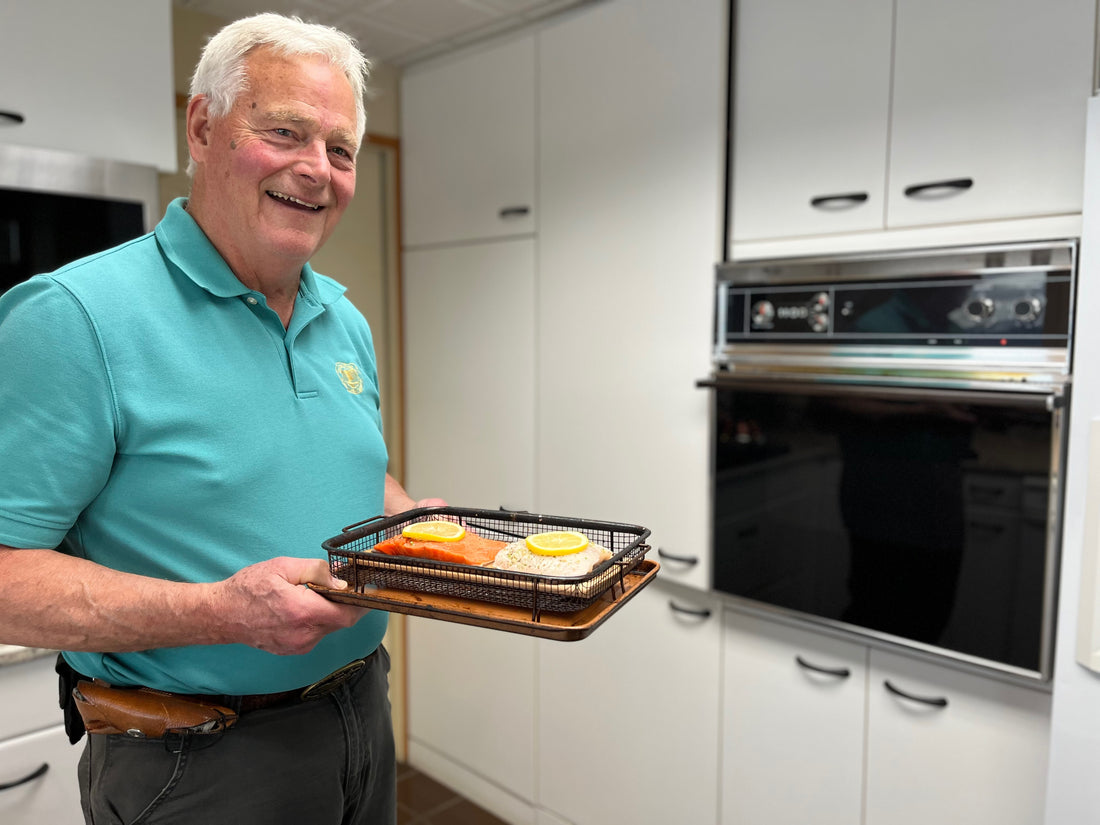
How to Grill or Bake on Alder Planks
There is such a wow factor to serving salmon on a plank! Alder-planked salmon is an elegant, delicious and simple way to cook on a grill or in your oven. Though cedar planks are perhaps more commonly known, their relative, the alder, is our preferred way to infuse a delicate sweet smoky flavor into salmon.
Can you cook alder-planked salmon in the oven?
Yes, if it's not the season to grill outdoors, alder-planked salmon is easy to bake in the oven. Grilling adds the smoky flavor, but oven-cooking allows the sweet subtle flavor of the alder to shine.
Why cook salmon on a plank?
We enjoy traditions and learning from those who came before us. Native Americans prepared salmon on planks hundreds - perhaps thousands - of years ago. Archeological evidence indicates that they strapped salmon to boards which they propped up right next to the fire to be slow-cooked and smoked. They also laid their fish on water-soaked boards right on the coals of the campfire to be slowly steamed and roasted.
Why cook salmon on an alder plank?
The plank, which needs to be soaked in liquid (see below), steams the fish evenly and slowly, imparting a unique, subtle earthy flavor. Besides being an easy way to cook salmon, it’s also a unique and impressive way to serve it. You can put this first-ranked planked fish on center stage, right on the table!
How do you start?
- Choose a wild caught salmon. Buy wild caught salmon direct from Alaska. Thaw it overnight in refrigerator.
- Soak your alder plank for two hours. Submerge it completely in water, or in another liquid. We suggest that you use just water the first time you use the plank, because it will then contain its richest level of flavor contributors. After that, you may want to try soaking it in apple cider vinegar, wine, cider or beer.
- You can also soak your plank thoroughly ahead of time, then put it into your freezer until you want to use it.

Prepare your fish
Remove fish from refrigerator and pat dry with a paper towel. Leave the skin on. Place on plank, skin side down. If you have a large filet, fold over the thinnest edges toward the middle and hold down with toothpicks. This will help the fish cook more evenly and prevent the juices from dripping down.

Speaking of juices, we recommend that you put a pan in your oven one rack below the plank to catch any juices that might drip from the fish. Line pan with tin foil or parchment paper to make clean-up easy.
Rub or brush salmon with olive oil and sprinkle with salt and seasonings of your choice. (There are salmon rubs you can buy, or just sprinkle with smoky paprika, garlic or dill.) Add thinly sliced lemons, if desired.

Bake and serve
Salmon can be baked on a plank in a conventional oven or in an outdoor barbecue grill. Turn the oven on to 375 ℉, or turn the grill to 450 ℉, or follow your grill directions.

Bake or broil until internal temperature of fish reaches 125 ℉ to 140 ℉, depending on the degree of doneness you prefer, and remembering that residual heat continues to bake your fish for a few minutes after removing it. Another great way to test if your salmon is done is to slide a fork into the thickest part and see if the salmon has lost almost all of its translucent appearance. It should now be mostly pink and should flake easily.
Remove fish from oven or grill and place plank on an insulated surface right on the table for serve-yourself dining, or place fish onto a fancy platter or on individual serving plates.

Serve and enjoy!

WATCH: Check out this video from @wildwoodgrillingplanks on how to grill outside with their planks
